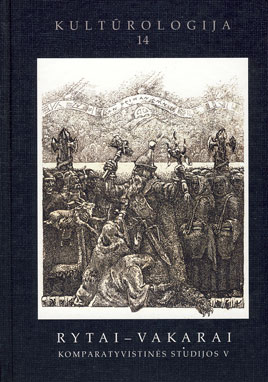Hidur micva ir puošnumo siekis tradiciniame Lietuvos žydų mene
Hidur mitzvah and the endeavor for splendor in the traditional art of Lithuanian jews
Author(s): Aistė Niunkaitė-RačiūnienėSubject(s): Cultural Essay, Political Essay, Societal Essay
Published by: Lietuvos kultūros tyrimų
Keywords: traditional culture of Lithuanian jews; traditional art of Lithuanian jews; aesthetics; hidur mitzvah; synagogue décor; aroney kodesh; judaic tradition
Summary/Abstract: This article discusses the concept of hidur mitzvah and the symbolic notion of sacred work, related to synagogue décor. The aesthetics associated with worship, with the spiritual orientation of traditional jewish art and with the endeavor for splendor are presented as an important component of the judaic tradition. The character of traditional art of Lithuanian jews is inseparable from the tangled categories of religion, everyday and domestic life. The religiously defined lifestyle determined that art in the Lithuanian jewish community was associated not as much with the decoration of houses in everyday life, as with the rituals of God-worship, the environment of ritual actions and the decoration of the ritual objects. The creation of the synagogues' interior décor and ritual items was understood as sacred work in the honor of the almighty. Therefore the Lithuanian jewish aesthetics is generally characterized by the religious circumstances and the beauty concept of art - Hidur mitzvah. It is stated that, on the one hand, Hidur mitzvah as the pursuit of beauty and splendor is understood as the aim to fulfil the religious requirement, while on the other hand - as a deep uninterrupted tradition, which has always been attempted to continue in the jewish culture, which is based on the authority of the past. The requirement for the splendor of the ritual space and ritual objects, its substantiation, possibilities of implementation in various Lithuanian Jewish communities, and expressions in concrete Lithuanian Jewish synagogue interiors, are analyzed in this article. Synagogue inscriptions, human memories and iconographically recorded precisely performed interior decorations of synagogues are presented as proof that the adorning of the spiritual space and ritual objects was understood as sacred work, dedicated to the lord almighty. This - sacred work is the exact way artists themselves referred to their work, proudly stating their authorship next to their artworks. It is claimed that the wish to perform hidur mitzvah correctly was the main motive, which encouraged many a jewish folk artist to fully dedicate himself to the sacred work of adorning and decorating synagogue interiors, carving amply decorated aroney kodesh and bimot of the most intricate shapes.
Journal: Kultūrologija
- Issue Year: 2006
- Issue No: 14
- Page Range: 294-319
- Page Count: 25
- Language: Lithuanian

